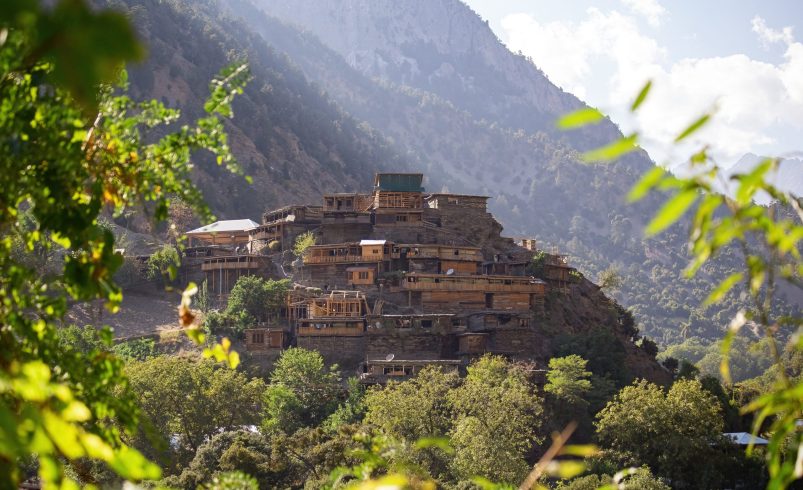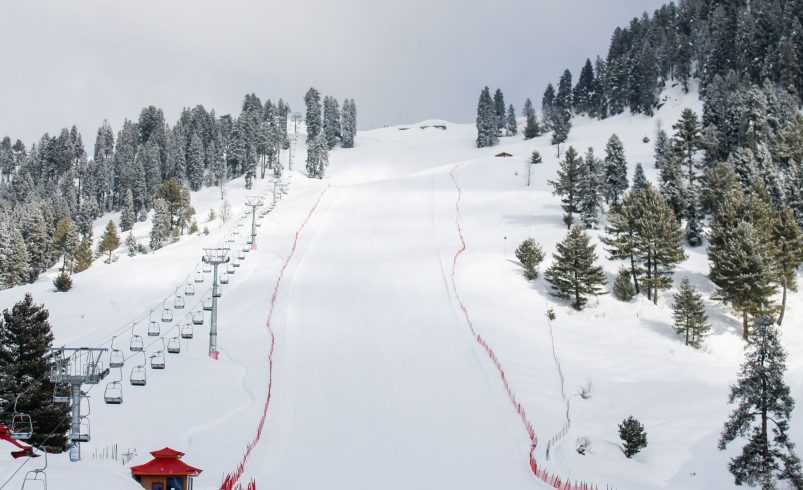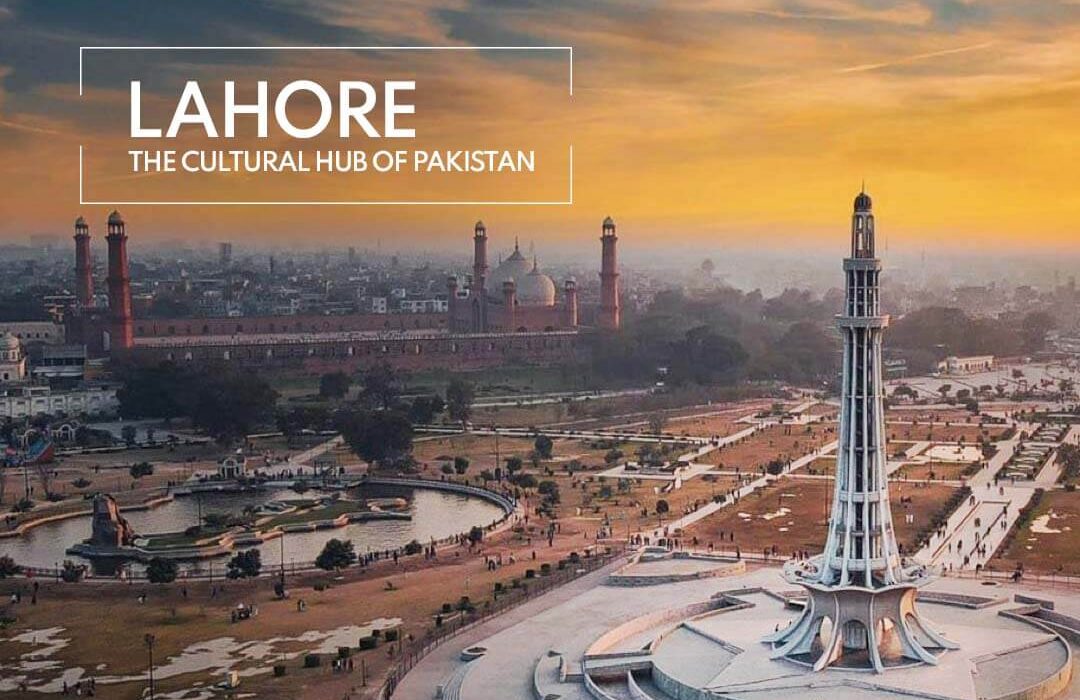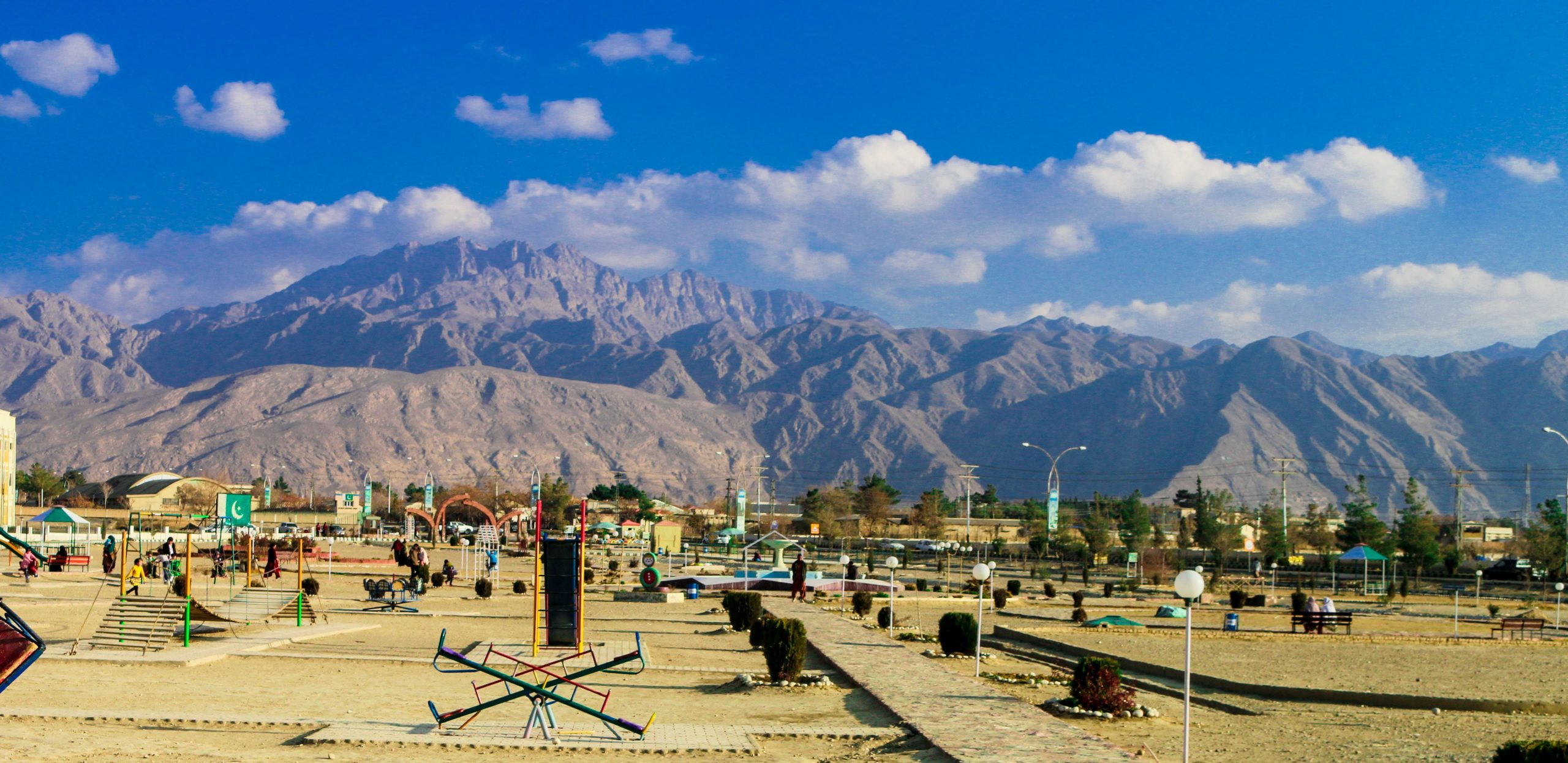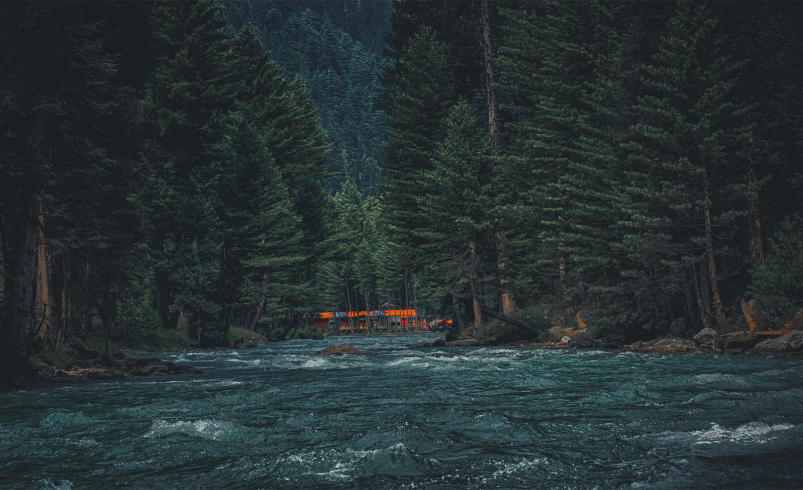
- May 6, 2025
🗺️ Introduction
Hidden in the Upper Dir District of Khyber Pakhtunkhwa, Kumrat Valley is a paradise for nature lovers and adventure seekers. This valley is famous for its verdant meadows, sky-high Deodar forests, and crystal-clear rivers that weave through the landscape like silver threads. Situated about 370 kilometers from Islamabad, Kumrat has remained relatively untouched, preserving its natural beauty and authentic culture.
What makes Kumrat Valley a must-visit? It’s the combination of majestic peaks, serene lakes, and the traditional hospitality of the local people that turn a trip into an unforgettable experience.
📜 History and Cultural Heritage of Kumrat Valley
The Origins and Settlement
Kumrat Valley’s history is deeply intertwined with the Yousafzai Pashtun tribes who have inhabited the area for centuries. Known for their fierce independence and strong cultural roots, these communities have protected the valley’s environment and traditions.
Rich Cultural Fabric
- Language: Pashto is widely spoken, though you may find locals who understand Urdu.
- Traditional Dance: The Attan, performed during festivals, is a sight to behold.
- Craftsmanship: Locals are skilled in woodworking, creating intricate designs from Deodar wood.
- Hospitality: Guests are considered blessings; expect to be offered green tea or traditional bread wherever you go.
Religious Significance
The valley is home to old mosques made from wood, reflecting the architectural style passed down generations.
🌿 Best Places to Visit in Kumrat Valley
🌲 Jahaz Banda Meadows
- Location: Upper reaches of Kumrat, about 3-4 hours trek from the valley center.
- Highlights: Vast green plains, snow-capped peaks, and camping sites.
- Activities: Trekking, horse riding, and stargazing.
- Best Time: May to September.
🏔️ Katora Lake
- Location: Above Jahaz Banda, requires an additional 4-5 hours trek.
- Highlights: Crystal-clear glacial lake shaped like a bowl (Katora in Pashto).
- Activities: Photography, nature walks, and picnicking.
- Best Time: June to September.
💦 Kumrat Waterfall
- Location: Near Thal village.
- Highlights: Tall, refreshing waterfall surrounded by pine trees.
- Activities: Bathing, photography, and picnic.
🖤 Kala Chashma (Black Spring)
- Location: Deep within Kumrat forest.
- Highlights: Spring with dark, mineral-rich waters.
- Activities: Water tasting (locals believe it has healing properties), picnic.
🏞️ Dojanga
- Location: Confluence point of two rivers (Panjkora and Dojanga streams).
- Highlights: Clear river views, ideal for fishing.
- Activities: Fishing, riverside camping.
🌳 Panjkora River
- Location: Flows through the entire Kumrat Valley.
- Highlights: Blue-green waters, rafting opportunities.
- Activities: Rafting, trout fishing, riverside bonfires.
🌲 Kumrat Forest
- Location: Spans through the central Kumrat.
- Highlights: Oldest Deodar (Cedrus Deodara) forest in Pakistan.
- Activities: Nature walks, birdwatching, forest camping.
🌸 Badagoi Pass
- Location: Connects Kumrat with Swat Valley.
- Highlights: High-altitude mountain pass with panoramic views.
- Activities: Jeep safari, trekking, photography.
🛖 Thal Village
- Location: Main entry point to Kumrat.
- Highlights: Traditional wooden homes, local bazaars.
- Activities: Buy local handicrafts, explore local cuisine.
⛺ Camping Pods
- Activities: Comfortable camping experience, bonfire nights.
- Location: Near Kumrat center.
- Highlights: Eco-friendly accommodation with modern facilities.
☀️ Best Time to Visit
The best time to visit Kumrat Valley is from May to September, when the valley is alive with greenery, flowers, and accessible trails. However, each season offers its unique charm:
🌸 Spring (April to May)
- Highlights: Fresh bloom, melting glaciers, mild temperatures (10°C to 20°C).
- Ideal for: Nature walks, photography, and exploring places to visit in Kumrat Valley before the tourist rush.
- Downside: Some higher treks like Katora Lake may still be snowbound.
🌿 Summer (June to August)
- Highlights: Lush green meadows, pleasant days (15°C to 25°C), cool nights.
- Ideal for: Family trips, camping at Jahaz Banda, trekking to Katora Lake, fishing in Panjkora River.
- Bonus: Local festivals like Jashn-e-Kumrat are celebrated in this period.
- Downside: Slightly more crowded due to peak season.
🍁 Autumn (September to early October)
- Highlights: Golden-red forests, fewer crowds, clear mountain views.
- Ideal for: Photographers, honeymooners, and peace seekers exploring the best places to visit in Kumrat Valley without rush.
- Downside: Nights start to get chilly (5°C to 10°C).
❄️ Winter (November to March)
- Highlights: Snow-capped scenery, frozen rivers, absolute serenity.
- Ideal for: Snow lovers and adventure seekers.
- Downside: Roads to Jahaz Banda and Katora Lake are blocked; only Thal and lower Kumrat areas are accessible. Not recommended for casual tourists.
👉 Pro Tip:
If you want to explore all top places to visit in Kumrat Valley like Jahaz Banda, Katora Lake, and Kala Chashma, plan your trip between June and September.
🚗 How to Reach Kumrat Valley from Islamabad
Step 1: Reach Islamabad (Capital City)
- By Air: Islamabad International Airport serves domestic and international flights.
- By Road: Easily reachable from all major Pakistani cities.
Step 2: Travel from Islamabad to Dir (Approx. 8-9 hours drive)
- Distance: ~370 km
- Route: Islamabad → Swat Motorway (M-16) → Chakdara → Dir.
- Transport Options:
- Private Car: Most comfortable.
- Bus/Coaster: Multiple services from Islamabad’s Pirwadhai and Faizabad Bus Stations to Dir.
Step 3: From Dir to Thal (Entry Point to Kumrat) (Approx. 3-4 hours)
- Distance: ~95 km
- Road Type: Paved road till Sheringal, then semi-paved towards Thal.
- Transport Options:
- 4×4 Jeep (Recommended)
- Local Hiace Vans available from Dir Bazaar.
Step 4: Thal to Kumrat Valley (Jeep Track) (1-1.5 hours)
- Distance: ~45 km
- Transport:
- Only 4×4 jeeps can go further into Kumrat Valley proper.
- Jeep services are available at Thal Jeep Stand.
- Note: This is an adventurous bumpy ride but offers amazing river views.
🚙 Alternate Routes:
- From Swat: Via Badagoi Pass (only in summer), connecting Kalam with Kumrat.
Note: For off-road enthusiasts only. - From Chitral: Through Lowari Tunnel and onward to Dir, then Kumrat.
🛻 Transport Tips:
- Always book jeeps at Thal, as normal cars cannot enter forest tracks.
- Carry cash, as ATMs are only available in Dir and not in Kumrat.
- Check weather updates before traveling, especially during monsoon and autumn seasons.
🏨 Where to Stay in Kumrat Valley
- Tent Camping: Popular option.
- Guesthouses: Available in Thall and upper Kumrat.
- Forest Rest Houses: Limited but scenic.
🍽️ What to Eat in Kumrat Valley
- Chapli Kebabs
- Saag with Makai ki Roti
- Fresh Trout Fish
- Green Tea (Qehwa)
Most food is organic, and locals often invite travelers to share meals.
💰 Estimated Travel Costs (in PKR)
- 4×4 Jeep Hire: 10,000-12,000/day
- Camping Tent Rent: 1,500-2,500/night
- Meals: 500-1,000 per person/day
- Guide Fees: 3,000-5,000 for treks
🗓️ Suggested 5-Day Itinerary from Islamabad
🚩 Day 1: Islamabad to Thal (Gateway to Kumrat Valley)
- Distance: 370 km (Approx. 10-12 hours with stops)
- Route: Islamabad → Chakdara → Dir → Sheringal → Thal
- Highlights:
- Cross the Lowari Tunnel (spectacular engineering marvel)
- Enjoy views of Panjkora River en route
- Stay: Overnight in Thal village at a guesthouse or hotel
- Travel Tip: Start early from Islamabad (5-6 AM) to reach before nightfall.
👉 Why this matters: Thal is the main starting point before exploring the best places to visit in Kumrat Valley.
🌲 Day 2: Thal to Kumrat Valley – Kala Chashma & Kumrat Waterfall
- Distance: 45 km (1.5 hours by 4×4 Jeep)
- Activities:
- Visit the famous Kala Chashma (Black Spring) – icy cold, crystal clear water
- Explore Kumrat Waterfall, a lush forested gem perfect for photos
- River picnic along the Panjkora River
- Optional: Short hike into Deodar Forests
- Stay: Camping site or wooden hut in Kumrat Valley
- Meals: Try local trout fish freshly grilled by riverside vendors
- Travel Tip: Carry warm clothes even in summer — evenings get chilly!
👉 These are among the best places to visit in Kumrat Valley, perfect for nature lovers and families.
🏞️ Day 3: Trek to Jahaz Banda Meadows
- Travel:
- Jeep ride from Kumrat → Jahaz Banda trek point
- 3-4 hour moderate trek (ideal for beginners with stamina)
- Highlights:
- The stunning Jahaz Banda Meadows resembling an emerald carpet
- Panoramic views of snow-capped Hindu Kush peaks
- Activities:
- Horse riding, photography, and soaking in serene mountain air
- Stay: Overnight in Jahaz Banda camping pods or tents
- Travel Tip: Hire a local porter to ease your trekking experience
👉 Pro Tip: Jahaz Banda is a crown jewel among the top places to visit in Kumrat Valley and worth every step of the trek!
🏔️ Day 4: Katora Lake Hike & Return to Kumrat Base
- Morning Trek:
- 4-5 hour hike from Jahaz Banda to Katora Lake
- Moderate difficulty — suitable for adventure seekers
- Highlights:
- The glacial Katora Lake (bowl-shaped) with turquoise waters
- Wildflowers and marmots along the trail
- Return:
- Trek back to Jahaz Banda (2-3 hours)
- Descend and jeep ride back to Kumrat base camp
- Stay: Overnight at Kumrat Valley camps
- Travel Tip: Start early (7 AM) to avoid afternoon weather changes
👉 Katora Lake is not to be missed if you’re covering the best places to visit in Kumrat Valley for an adventure-packed trip.
🏡 Day 5: Return from Kumrat Valley to Islamabad
- Distance: 370-400 km (Approx. 10-12 hours)
- Route: Kumrat → Thal → Dir → Islamabad
- Optional Stops:
- Dir Bazaar (buy local walnuts & handicrafts)
- Lowari Top (if open) for bonus scenic views
- Travel Tip:
- Refuel at Dir — limited petrol pumps beyond Thal.
- Carry snacks and water for the long ride back.
📍 Nearby Places to Explore
- Thall Village: Gateway to Kumrat.
- Utror Valley: 50 km away, equally beautiful.
- Kandol Lake: Trekking paradise nearby.
🎒 Travel Packing Checklist
- Warm clothes (even in summer nights)
- Trekking shoes
- Power bank
- First-aid kit
- Water bottles
- Sunscreen and sunglasses
🚑 Emergency Contacts
- Dir Police: 0945-920018
- Rescue 1122: Dial 1122
- Local Guide Association: Available at Thall bazaar
💡 Travel Tips
- Always hire a local guide for treks.
- Respect the cultural norms — modest dressing recommended.
- Avoid visiting during winter (routes are blocked).
- Carry cash, as ATMs are scarce.
✅ Important Notes for Travelers
- Mobile network coverage is weak in upper Kumrat; only Jazz works partially.
- Always hire a registered local guide for treks to Jahaz Banda and Katora Lake.
- Book your jeep in advance during peak season (June-August).
❓ FAQs
🔎 What is the best time to explore the top places to visit in Kumrat Valley?
The best time is from May to September when all routes are open and the meadows are in full bloom.
🔎 How do I reach the places to visit in Kumrat Valley from Islamabad?
You can drive or take public transport to Dir, then hire a 4×4 jeep for places to visit in Kumrat Valley like Jahaz Banda and Katora Lake.
🔎 Is Kumrat Valley safe for travelers?
Yes, Kumrat Valley is considered safe, but always inform local authorities about your trekking plans.
🔎 What should I pack while visiting Kumrat Valley?
Always pack warm clothes, trekking shoes, and a first-aid kit even during the summer.
🔎 Are there hotels near the top places in Kumrat Valley?
Mostly guesthouses and camping sites are available. For top places like Jahaz Banda, camping is common.
🔎 Do I need a guide to visit places in Kumrat Valley?
While not mandatory, hiring a local guide is highly recommended for remote treks like Katora Lake.
🔎 Can families visit Kumrat Valley?
Absolutely! Kumrat is suitable for families, especially if they stick to the main tourist places.
🔎 Are mobile networks available in Kumrat Valley?
Only limited cellular coverage is available. Telenor works better than others.
🔎 Is there internet or WiFi in Kumrat Valley?
Internet is scarce, so prepare for an off-grid experience while visiting places in Kumrat Valley.
🔎 What activities can tourists enjoy in Kumrat Valley?
You can enjoy trekking, camping, trout fishing, and nature photography.
🔎 What are the top natural attractions in Kumrat Valley?
Jahaz Banda Meadows, Katora Lake, and the Panjkora River are top natural spots.
🔎 Is there snowfall in Kumrat Valley?
Yes, heavy snowfall occurs from December to February, but access becomes difficult.
🔎 Do I need a permit to enter Kumrat Valley?
No, permits are generally not required for local and foreign tourists.
🔎 Are there ATMs available in Kumrat Valley?
No ATMs in the valley, so carry enough cash from Dir or Timergara.
🔎 What is the altitude of Katora Lake?
Katora Lake sits at around 11,500 feet above sea level.
🔎 Can I travel solo to Kumrat Valley?
Yes, solo travel is possible, but always inform someone and consider hiring a guide.
🔎 Are there any cultural norms tourists should follow?
Yes, dress modestly and always respect local customs when visiting places in Kumrat.
🔎 How long is the trek to Katora Lake?
It usually takes about 5-6 hours depending on your pace and weather.
🔎 What type of wildlife can be spotted in Kumrat Valley?
You may spot snow leopards, markhor goats, and various bird species.
🔎 Is camping safe in Kumrat Valley?
Camping is safe if done in designated areas and with local guides’ assistance.
🏔️ Conclusion
Kumrat Valley is truly a hidden treasure of Pakistan, offering an escape into pristine nature, rich cultural experiences, and thrilling adventure activities. From Jahaz Banda’s rolling meadows to the serene waters of Katora Lake, each spot in Kumrat tells a story of untouched beauty. Plan your trip between May and September to get the best of what the valley offers, and make sure to follow local customs to ensure a memorable and respectful visit. So, pack your bags and explore the top places to visit in Kumrat Valley—you won’t be disappointed!


